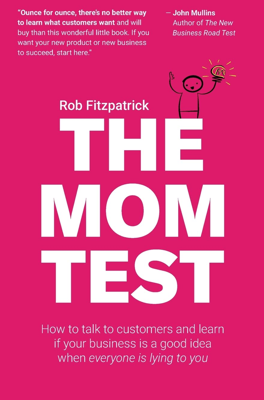Summary
"The Mom Test" is a resource by Rob Fitzpatrick that provides strategies for entrepreneurs to extract valuable insights from customer conversations, particularly avoiding biased and unreliable feedback. The core principle is to focus on the customer's experiences, current problems, and past behaviors instead of discussing the business idea directly, which can lead to sugarcoated feedback.
Key Techniques and Insights
- Avoid direct questions about your idea: Asking whether an idea is good can elicit overly positive, untruthful feedback. Instead, focus on the customer's past experiences and problems that your idea might solve.
- Base questions on past behaviors: Inquiring about future intentions leads to hypothetical answers. Asking about past actions provides concrete data that better reflect potential customer behaviors.
- Listen more than you talk: Speak less to avoid leading the conversation and confirmation biases, enabling more genuine customer insights.
The importance of avoiding “bad data” is emphasized, detailing how compliments, generic statements, and untested ideas can mislead entrepreneurs. Applying the Mom Test means crafting conversations that probe deep into users' actual needs and actions, steering clear of assumptions and shallow validations.
Conversational Strategy
The book advocates a casual conversational approach over formal meetings to prevent biases and allow for natural engagement. Entrepreneurs are encouraged to engage in real-world settings like conferences or casual catch-ups, fostering more honest exchanges without excessive formalities.
Gathering Useful Information
Entrepreneurs should prepare by identifying the top questions that will test their business hypotheses critical to their model. Data collection should focus on obtaining commitments and actions that reflect genuine interest or feasibility, distinguishing between strong leads and weak ones.
Practical Application and Pitfalls
A systematic approach is recommended for initiating and running customer conversations, including leveraging warm introductions and engaging in environments abundant with potential customers. Furthermore, attention is given to how to segment potential markets and select customers wisely to focus on those who truly benefit and might sustainably engage with the product.
In short, "The Mom Test" guides entrepreneurs through structuring conversations that cut through the usual biases and polite deflections to uncover actionable and truthful customer insights, ultimately helping to validate and refine business ideas effectively.
